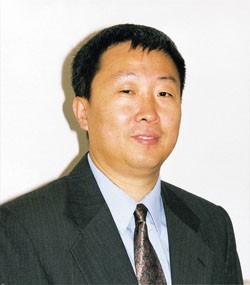China faces increased spread of HIV (original) (raw)
After years of concealing the existence of sexually transmitted diseases (STDs), prostitution, homosexuality, and growing numbers of AIDS cases, the Chinese government appears to be making efforts to be more open in the hope that it can prevent a major HIV epidemic. While AIDS and public health researchers are unanimously supportive of this move, some fear that infection rates have already reached epidemic proportions in the country. They say privately that Africa may pale by comparison with the situation in China.
One of the first signs that the Chinese government was implementing new measures to tackle HIV was the announcement that the sale of blood for transfusion was to be banned beginning October 1st (Nature Med., 4, 139; 1998). Around 17 percent of HIV positive individuals in China were infected via transfusion.
But according to Yichen Lu, director of virology at Avant Immunotherapeutics, Massachusetts, who has established close links with his home country in an effort to assist using his expertise in HIV, the government is doing much more.
As Nature Medicine went to press, China was among several Southeast Asian nations that participated in a conference held in Tokyo to discuss the possibility of developing an HIV vaccine for the region. Participants at the meeting entitled "AIDS Vaccines in Asia, Needs and Opportunities," organized by UNAIDS and the World Health Organization, included one high-level public health official and one senior scientist from each country. Epidemiologist Shao Yiming, a member of China's National Expert Committee on AIDS, and Li Heming, chair of the Chinese AIDS Vaccine Group of the Chinese Academy of Preventive Medicine (CAPM), represented China. Western representatives were believed to include Peggy Johnston, newly appointed Assistant Director for AIDS vaccines at the US National Institute of Allergy and Infectious Diseases.
Some Western AIDS researchers have been invited to the country to help set up diagnostic facilities and a Chinese Foundation for Prevention of STD and AIDS has been created, chaired by Zeng Yi, chief of the Department of Tumor Viruses and HIV at CAPM. This foundation will sponsor a public health education exhibition in Beijing in December, in concert with World AIDS Day. Two years ago, this kind of display would be "unthinkable," says Lu.
Perhaps one of the most difficult steps that China has taken is disclosing the size of the HIV problem. At a speech at the 13th International AIDS Congress in Geneva, China's vice minister of public health, Dakui Yin, revealed the extent of infection. From the time that the first case of HIV infection was identified, up until March 1998, more than 10 million Chinese were tested for HIV antibodies, said Yin. Of these, 9,970 tested positive—3217 of them in 1997. There were 290 confirmed cases of AIDS and 173 deaths from AIDS. Yunnan Province, which is adjacent to Myanmar (formerly Burma), has the greatest number of infection cases. Yin told the audience that intravenous drug users constitute 67 percent of all HIV infections. Yin stated that China's mission "is to keep the number of HIV infections below 1.5 million by 2010."
Unfortunately, these numbers may be gross underestimates. "It is now said there are 200,000 cases or more, and WHO estimates 400,000," says HIV researcher David Ho, director of the Aaron Diamond AIDS Research Center at Rockefeller University in New York. Ho, who has traveled to China each year for the past five or six years, explains that when he first began visiting China, "the epidemic was said to be less than 1000 cases, over 90 percent of them localized to Yunnan Province." Now cases have been reported in Xinjiang Province in the northwest and Anhui and Hebei provinces in central China.
Roger Detels of the University of California, Los Angeles, who has been working with the Chinese since the late 1980s to develop a Ph.D. training program for Chinese health professionals, says that the different nature of drug users in China means that China faces the opposite flow to most countries—infection began in rural areas and is spreading to urban sites. Detels believes that even though the Chinese "may not be forthcoming in terms of numbers, it doesn't mean they don't know what the real numbers are."
Lu agrees: "There is indirect evidence that indicates the potential HIV-1 epidemic in China may be more devastating." In 1997 there were 461,510 reported cases of STDs in China. This, says Lu, "makes it the third most prevalent infectious disease group in China, following dysentery and hepatitis." He adds that, "It's almost certain that the reported STD cases represent only a fraction of the infected population."

Yichen Lu
Whatever the reality of the epidemic, Lu, like others, thinks that China is genuinely trying to tackle the problem at the highest levels of the government. "State Councilor Peng Peiyun suggested in a public speech that 'we should take AIDS control work to be as important as safeguarding our nation,'" states Lu. "The official English translation of the Chinese word in this speech was 'safeguarding,' but I really think it was meant to be 'saving' or 'rescuing from disasters.'"